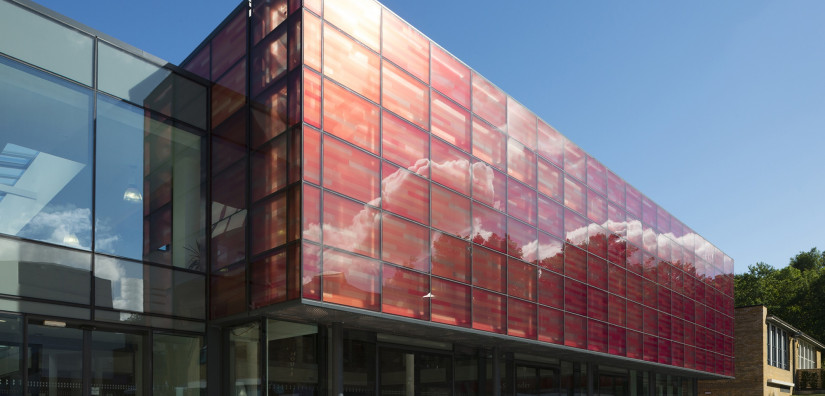Win A Million!

Fill in the details.
The University of Hertfordshire’s new Hutton Hub building for the Student Union and other student services had a distinctive glass façade demanding tight tolerances on differential settlement of the building’s foundation. However, this would prove challenging since the site investigation encountered vast network of solution and mining features covering most of the building’s footprint and with depths of up to 25m. The infill varied significantly from soft spots of clay to dense sand and chalk, conditions extremely susceptible to differential ruled out a raft foundation so piled foundations were recommended.
If a raft foundation were feasible, the structural engineers needed spring stiffness values and other soil-structure outputs for these very complex ground conditions.
Since the site had already been extensively investigated in multiple phases, so the infill properties were mapped precisely in three dimensions. These infill properties were transferred to a 3D Finite Element Analysis (FEA) model of the raft foundation and supporting ground. The model also included shear and core walls to add their stiffening effect and the structural loads were simulated.
It was found that the raft was able to span the soft spots in the infill and the predicted differential settlements were very much lower than those of the conventional analysis methods, and within acceptable limits. This was reaffirmed by InSAR analysis data showing less than 3mm settlement in the 18 months following construction.
Thanks to these results, a raft foundation was now available averting an impending additional cost of around £1 million for planned foundation piling was averted. The associated delays and higher CO2 emissions of foundation piling were also avoided.
Highlights
- Extensive site investigation data allowed the top of chalk and infill properties to be mapped in detail.
- The geometrical detail was transferred to a 3D FEA model of the raft foundation.
- Differential settlements were found to be within acceptable limits for the glazed facade.
- 18-month post-construction settlements measured by DInSAR were less than 3mm.
- Bending moment and shear force output were used in the structural design of the raft.
